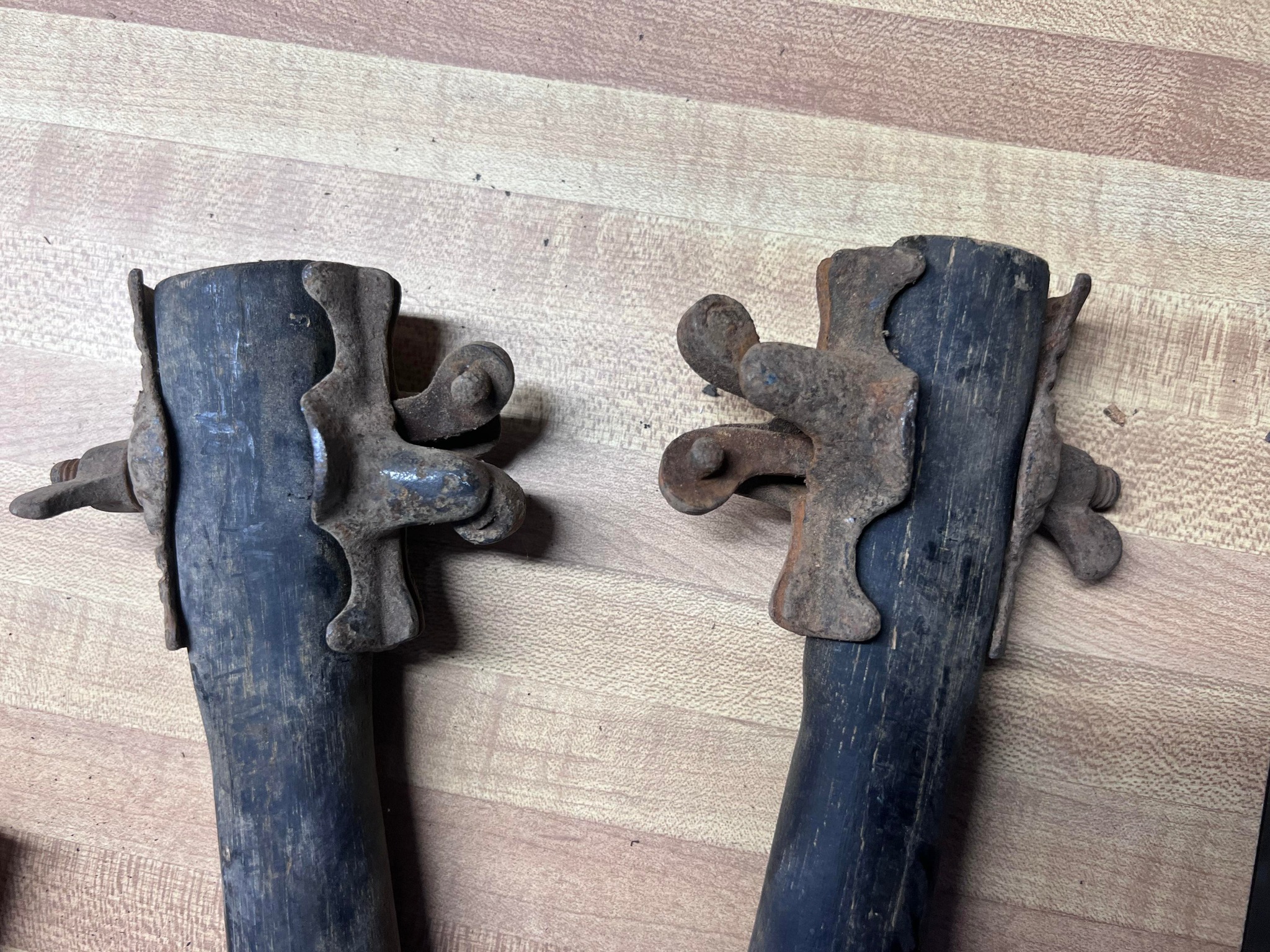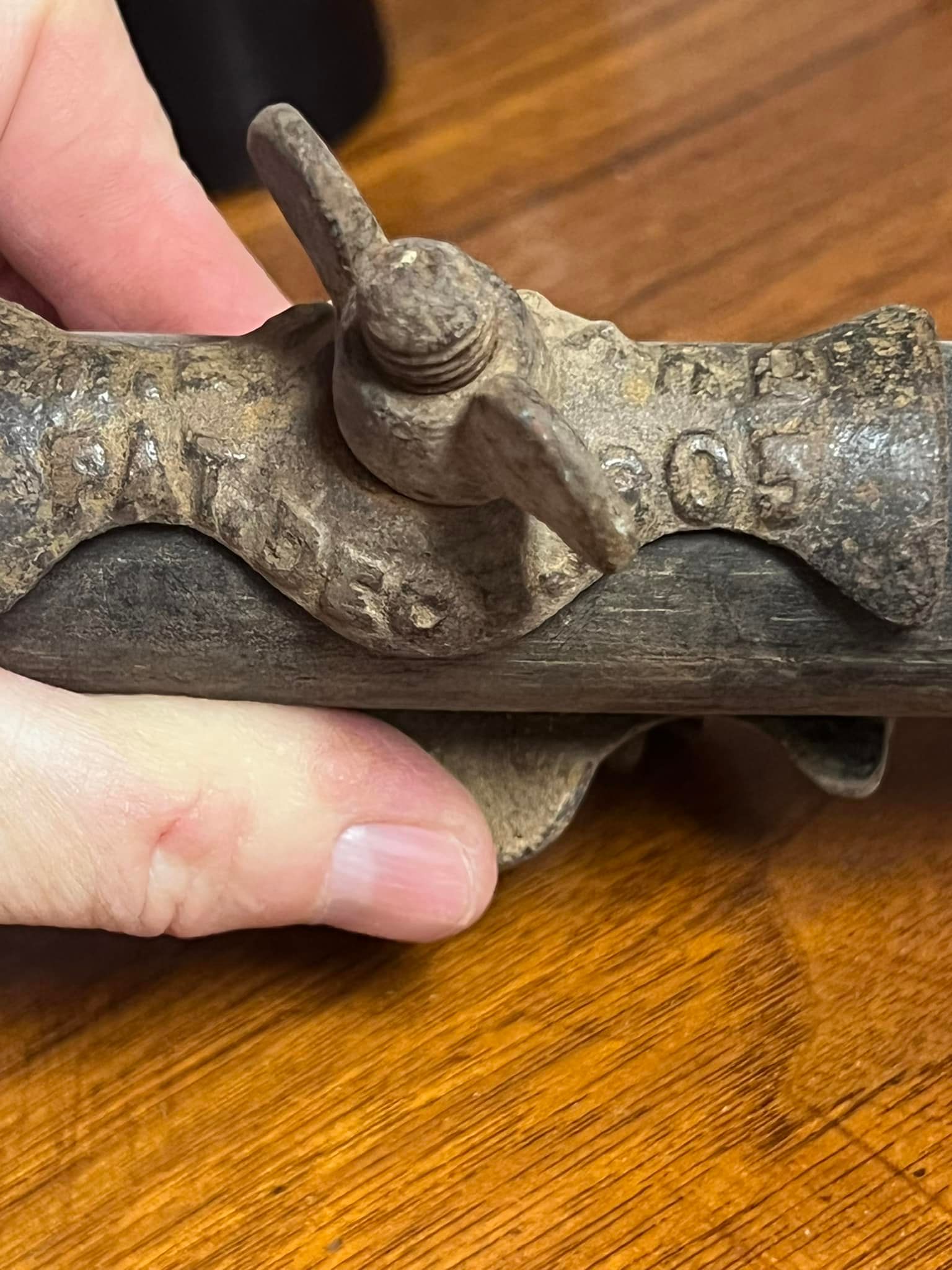 Dillard Patent connector on handles |
 Dillard Patent connector close up picture #1 |
 Dillard Patent connector close up picture #2 |
I noticed that many of the saws illustrated in the various manufacturer's catalogs have a pair of holes punched on the ends of the 2 man crosscut saws. It seams as though Dillard made the studs on his saw connection match the spacing of the punched holes on many of the available saws or it msy be that many manfacturers decided to punch two holes to increse sales. Dillard got his oatent in 1905 do it may make dating saws easier, with those made befir 1905 being older thant the "two hole" saws.
The Dillard Patent: 806,328 (PDF, 3 pages)I found this information about this type of saw connector on Facebook. It was originally posted by: Kim Waites. I have copied his FaceBook pictures as they are better than the ones that I have taken.
Well, I got a tip off from a buddy and scored 4 saws this morning. They are all rusty and need work but a few will be operational with a good cleaning and filing. Three had loop style handles but the 4th had these curious handles of which I have never seen. They actually go in both holes. Lots of moving pieces like western style handles and you have to maneuver one part one way to get it off the metal. Anyone know what I have here? I could make out W.E. Dillard
The most relevant reply was from: Tom Lovett:
I have a pair of these. The wood is marked "E.C. BRINSER's SONS, INC." "Saw Handle Lion No. 5" "Made in Richmond, VA". The metal pieces say "W.E.Dillard PAT. DEC 5, 1905"
They provide a very solid connection to the saw, but they don't fit all saws.
 Dillard Patent connector on handles |
 Dillard Patent connector close up picture #1 |
 Dillard Patent connector close up picture #2 |
On my site examples of saws punched correctly for this type of this connection are:
There are additional connectors here without handles as:
Saws that have the correct spacing to use this connector type include at least all of the following (there are probably more here that I missed):
However this saw does not have the correct spacing